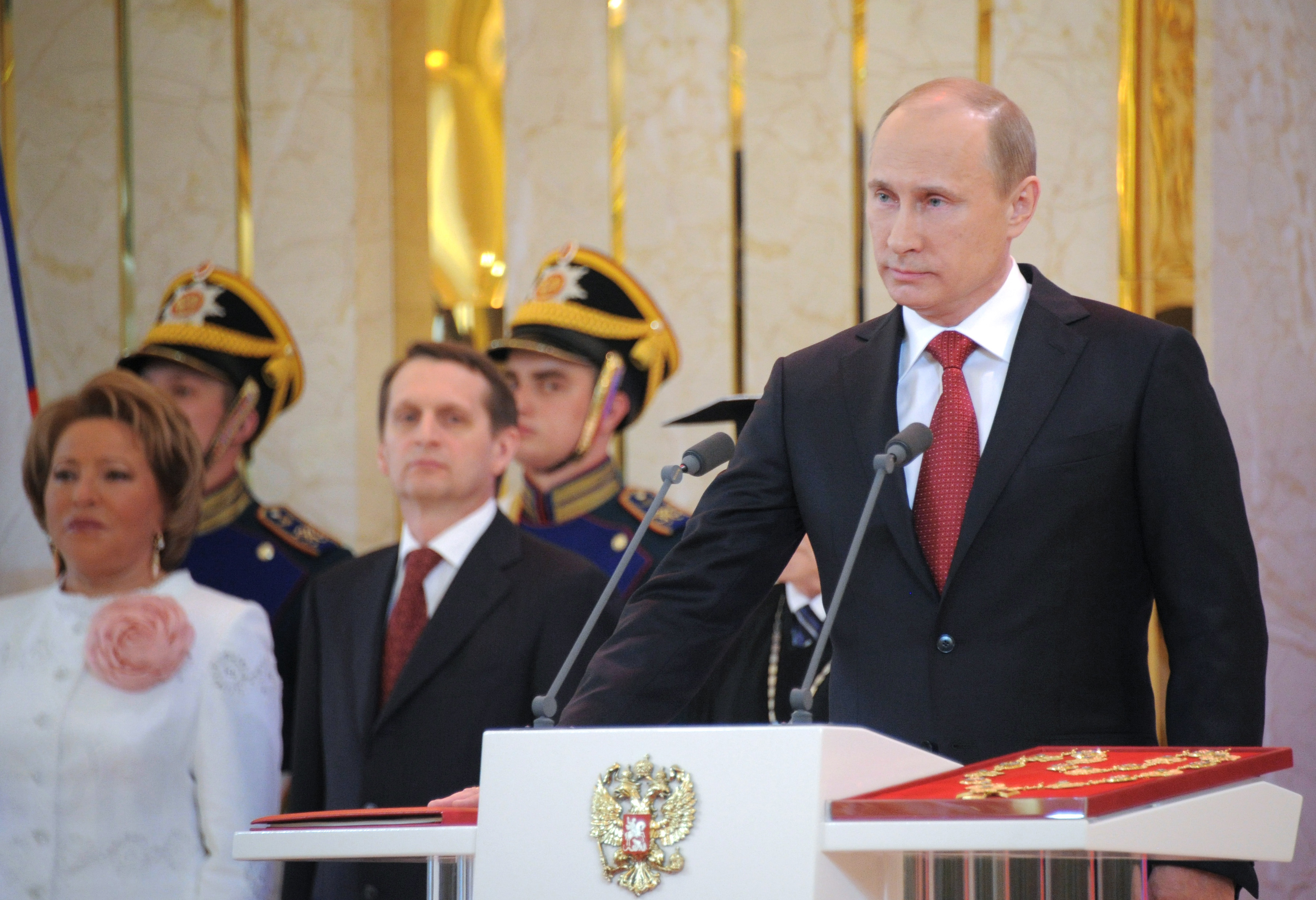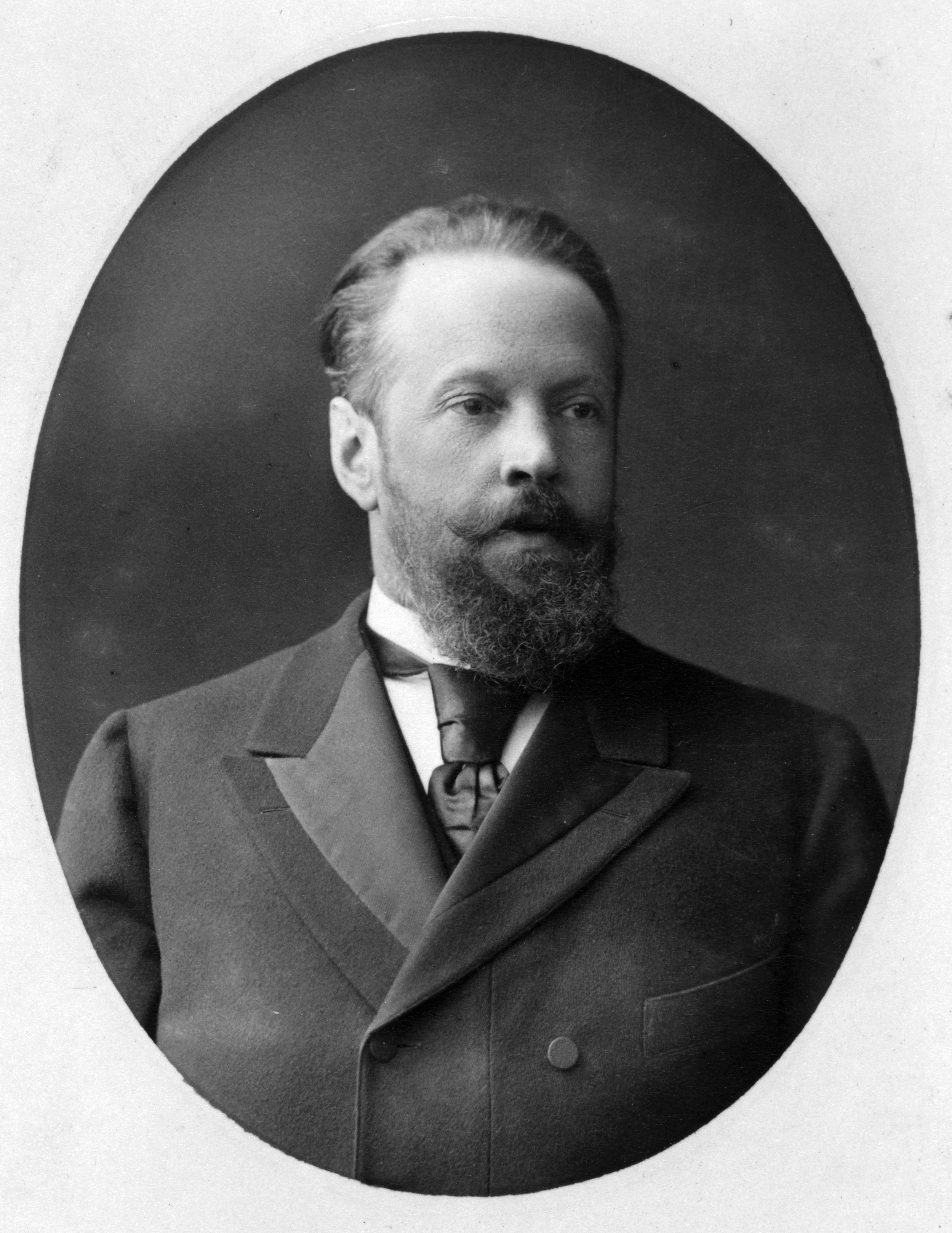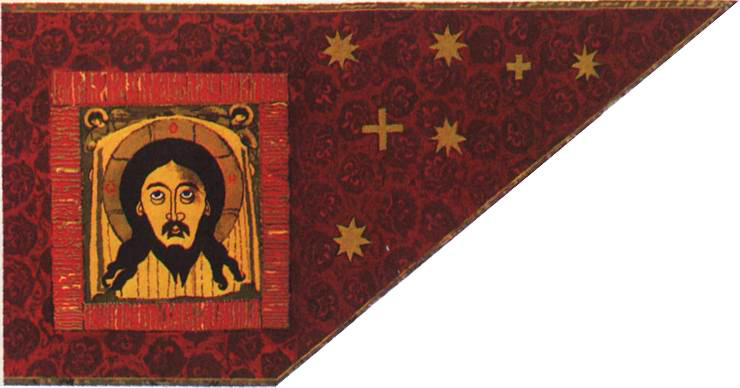|
All-Russia People's Front
The All-Russia People's Front (ONF; russian: Общероссийский народный фронт, Obshcherossiyskiy narodnyy front), is a political coalition in Russia started in 2011 by then- Prime Minister of Russia Vladimir Putin to provide the United Russia political party with "new ideas, new suggestions and new faces". The ONF aims to forge formal alliances between United Russia (the ruling party from 2001 onwards) and numerous Russian nongovernmental organizations. On 12 June 2013 the ONF founding conference elected Putin (President of Russia from 2012) as the Front's leader.Putin becomes Popular Front for Russia leader Interfax-Ukraine (13 June 2013). ...
|
New People (political Party)
New People (russian: Новые люди, Novyye lyudi) is a political party in Russia formed in Moscow on 1 March 2020. New People is considered a liberal party, and observers have called it centrist or centre-right. It was established in March 2020 by Alexey Nechayev, the founder of the Russian cosmetics company Faberlic. Nechayev was elected as party chairman during the second party congress, held on August 8, 2020. Alexander Davankov is the head of the party executive committee. In 2020, the party entered four regional parliaments on party lists, earning the right to participate in the 2021 elections to the State Duma without collecting voters' signatures. The party opposed many policies of the ruling United Russia, although is supportive towards Vladimir Putin specifically and has been accused of being a spoiler party to attract young and liberal voters. History In January 2020, Alexey Nechayev announced the party's creation to the media. On 1 March 2020, the constit ... [...More Info...] [...Related Items...] OR: [Wikipedia] [Google] [Baidu] |
Interfax-Ukraine
The Interfax-Ukraine ( uk, Інтерфакс-Україна) is a Kyiv-based Ukraine, Ukrainian independent news agency founded in 1992. The company does not belong to the Russian news corporation Interfax Information Services. The company publishes in Ukrainian, Russian, English & German. The company owns a 50-seat press centre. The staff of the agency is 105 people (as of the end of February 2022) History Interfax was formed on 24 November 1992, the year following Modern history of Ukraine#Independent Ukraine (1991 to present), Ukraine's 1991 independence, by a team of 10 people in Kharkiv. In 1993 the agency moved to Kyiv. References External links * News agencies based in Ukraine Mass media in Kyiv 1992 establishments in Ukraine {{Ukraine-company-stub ... [...More Info...] [...Related Items...] OR: [Wikipedia] [Google] [Baidu] |
President Of Russia
The president of the Russian Federation ( rus, Президент Российской Федерации, Prezident Rossiyskoy Federatsii) is the head of state of the Russian Federation. The president leads the executive branch of the federal government of Russia and is the commander-in-chief of the Russian Armed Forces. It is the highest office in Russia. The modern incarnation of the office emerged from the president of the Russian Soviet Federative Socialist Republic (RSFSR). In 1991, Boris Yeltsin was elected president of the RSFSR, becoming the first non Communist Party member to be elected into Soviet politics. He played a crucial role in the dissolution of the Soviet Union which saw the transformation of the RSFSR into the Russian Federation. Following a series of scandals and doubts about his leadership, violence erupted across Moscow in the 1993 Russian constitutional crisis. As a result, a new constitution was implemented and the 1993 Russian Constitution remains ... [...More Info...] [...Related Items...] OR: [Wikipedia] [Google] [Baidu] |
Nongovernmental Organizations
A non-governmental organization (NGO) or non-governmental organisation (see spelling differences) is an organization that generally is formed independent from government. They are typically nonprofit entities, and many of them are active in humanitarianism or the social sciences; they can also include clubs and associations that provide services to their members and others. Surveys indicate that NGOs have a high degree of public trust, which can make them a useful proxy for the concerns of society and stakeholders. However, NGOs can also be lobby groups for corporations, such as the World Economic Forum. NGOs are distinguished from international and intergovernmental organizations (''IOs'') in that the latter are more directly involved with sovereign states and their governments. The term as it is used today was first introduced in Article 71 of the newly-formed United Nations' Charter in 1945. While there is no fixed or formal definition for what NGOs are, they are general ... [...More Info...] [...Related Items...] OR: [Wikipedia] [Google] [Baidu] |
Party Of Power
The term "party of power" refers to a political party that has a close relationship with the executive branch of government such that the party appears to function as an extension of the executive rather than as an autonomous political organization. The concept resembles that of a cartel party. In a presidential republic, the party of power typically forms a legislative block that backs the executive. The concept has been commonly applied to post-Soviet political parties. Claims have been made that United Russia, the New Azerbaijan Party, Kazakhstan's Amanat, the People's Democratic Party of Tajikistan, the Democratic Party of Turkmenistan and Georgian Dream (from 2013) are parties of power. Parties that have been considered as parties of power in the past include the Union of Citizens of Georgia (until 2003), the Georgia's United National Movement (until 2013) and the Republican Party of Armenia (until 2018). Parties of power are typically described as having a hierarchical top ... [...More Info...] [...Related Items...] OR: [Wikipedia] [Google] [Baidu] |
Prime Minister Of Russia
The chairman of the government of the Russian Federation, also informally known as the prime minister, is the nominal head of government of Russia. Although the post dates back to 1905, its current form was established on 12 December 1993 following the introduction of a new constitution. Due to the central role of the president of Russia in the political system, the activities of the executive branch (including the prime minister) are significantly influenced by the head of state (for example, it is the president who appoints and dismisses the prime minister and other members of the government; the president may chair the meetings of the cabinet and give obligatory orders to the prime minister and other members of the government; the president may also revoke any act of the government). The use of the term ''prime minister'' is strictly informal and is never used in the constitution. Mikhail Mishustin is the current prime minister. He was appointed on 16 January 2020 after ... [...More Info...] [...Related Items...] OR: [Wikipedia] [Google] [Baidu] |
Political Alliance
A political group is a group consisting of political parties or legislators of aligned ideologies. A technical group is similar to a political group, but with members of differing ideologies. International terms Equivalent terms are used different countries, including: politics of Argentina, Argentina (''bloque'' and ''interbloque''), politics of Australia, Australia (party room); politics of Austria, Austria (''Club''); politics of Belgium, Belgium (''fractie''/''fraction''/''Fraktion''); politics of Brazil, Brazil and politics of Portugal, Portugal ("grupo parlamentar" or, informally, "bancadas"); politics of Germany, Germany (''Fraktion''); politics of Italy, Italy (''gruppo''), politics of Finland, Finland (eduskuntaryhmä/''riksdagsgrupp''); the politics of the Netherlands, Netherlands (''fractie''); politics of Poland, Poland (''frakcja''), politics of Switzerland, Switzerland (''fraction''/''Fraktion''/''frazione''); and politics of Romania, Romania (''grup parlamentar''). ... [...More Info...] [...Related Items...] OR: [Wikipedia] [Google] [Baidu] |
Flag Of Russia
The national flag of Russia (russian: Флаг России, Flag Rossii), also known as the ''State Flag of the Russian Federation'' (russian: Государственный флаг Российской Федерации, Gosudarstvenny flag Rossiyskoy Federatsii), is a tricolour (flag), tricolour flag consisting of three equal horizontal fields: white on the top, blue in the middle, and red on the bottom. The flag was first used as an ensign for Russian merchant ships in 1696. It remained in use until 1858, when the first official flag of the Russian Empire was decreed by Alexander II of Russia, Alexander II, which was a tricolour consisting of three horizontal fields: black on the top, yellow in the middle, and white on the bottom. A decree in 1896 reinstated the white, blue, and red tricolour as the official flag of the Russian Empire until the Revolution of 1917. Following the creation of the Russian Socialist Federative Soviet Republic after the October Revolution, Bo ... [...More Info...] [...Related Items...] OR: [Wikipedia] [Google] [Baidu] |
Blue
Blue is one of the three primary colours in the RYB colour model (traditional colour theory), as well as in the RGB (additive) colour model. It lies between violet and cyan on the spectrum of visible light. The eye perceives blue when observing light with a dominant wavelength between approximately 450 and 495 nanometres. Most blues contain a slight mixture of other colours; azure contains some green, while ultramarine contains some violet. The clear daytime sky and the deep sea appear blue because of an optical effect known as Rayleigh scattering. An optical effect called Tyndall effect explains blue eyes. Distant objects appear more blue because of another optical effect called aerial perspective. Blue has been an important colour in art and decoration since ancient times. The semi-precious stone lapis lazuli was used in ancient Egypt for jewellery and ornament and later, in the Renaissance, to make the pigment ultramarine, the most expensive of all pigments. In the ... [...More Info...] [...Related Items...] OR: [Wikipedia] [Google] [Baidu] |
White
White is the lightest color and is achromatic (having no hue). It is the color of objects such as snow, chalk, and milk, and is the opposite of black. White objects fully reflect and scatter all the visible wavelengths of light. White on television and computer screens is created by a mixture of red, blue, and green light. The color white can be given with white pigments, especially titanium dioxide. In ancient Egypt and ancient Rome, priestesses wore white as a symbol of purity, and Romans wore white togas as symbols of citizenship. In the Middle Ages and Renaissance a white unicorn symbolized chastity, and a white lamb sacrifice and purity. It was the royal color of the kings of France, and of the monarchist movement that opposed the Bolsheviks during the Russian Civil War (1917–1922). Greek and Roman temples were faced with white marble, and beginning in the 18th century, with the advent of neoclassical architecture, white became the most common color of new churches ... [...More Info...] [...Related Items...] OR: [Wikipedia] [Google] [Baidu] |
.jpg)




